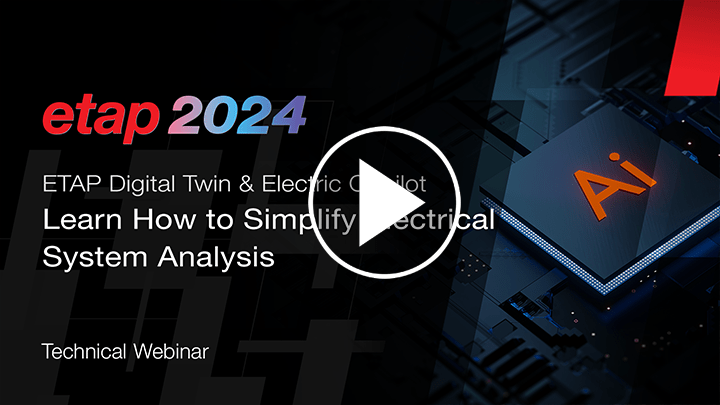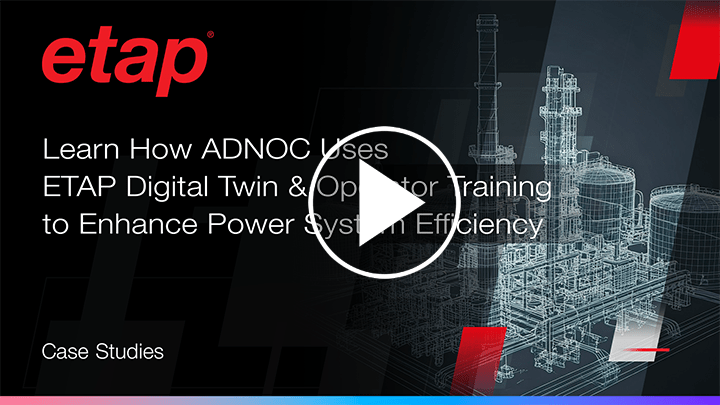263 Item(s) found
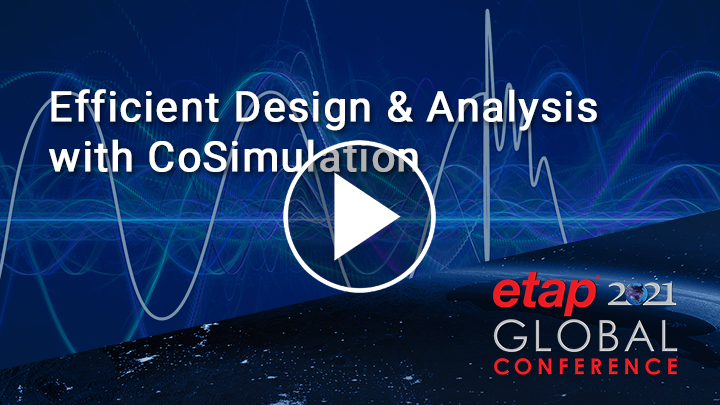
Efficient Design & Analysis with CoSimulation
- 22:50
- Case Study
Co-simulation is the cooperative simulation of a system model through different software packages. Collaborative simulation, as such, spans more physics domains and offers more insight than single-domain engines alone. Therefore, the collective composition of its parts enables multi-domain, multi-physics simulation results.ETAP CoSim™ enables ETAP simulation engines to collaborate and interact. For example, the ETAP Time Domain Power Flow can co-simulate with ETAP Harmonic Analysis to assess harmonics distortion over time. ETAP CoSim platform also enables ETAP and 3rd party tools to co-simulate and solve large, complex, and multi-disciplinary system models—collectively via an efficient API surface. The ability to co-simulate with third-party software extends existing software capabilities into the multi-physics domain and greater situational awareness. This solution presentation will introduce the concepts of co-simulation and the flexible ETAP CoSim platform. The presentation will also highlight commercial use-cases of Phasor and Electromagnetic co-simulation using emtCoSim™ and Controller Hardware-in-the-Loop (CHIL).

Integrated Stability & Protection Sequence of Operation
- 22:39
- Case Study
Many protection functions such as over/under frequency, out-of-step, generator loss of excitation are set based on power system dynamic characteristics. These protection functions were conventionally set with the assumption that, system dynamics are predictable using simplistic and aggregated models. Higher penetration of distributed energy resources (DERs) has made power system dynamics considerably more complex to predict through conventional approaches. ETAP offers a new solution to perform unified protection and transient stability study to accurately capture interactions between system dynamics and protection system. This solution allows protection engineers and network planners to 1- tune protection settings to act properly during system dynamics, 2- design and test remedial protection schemes, 3- evaluate all protection functions such as out-of-step, overcurrent and generator loss of excitation protection function and 4- perform grid code studies that require evaluating DER performance along with its protection system.
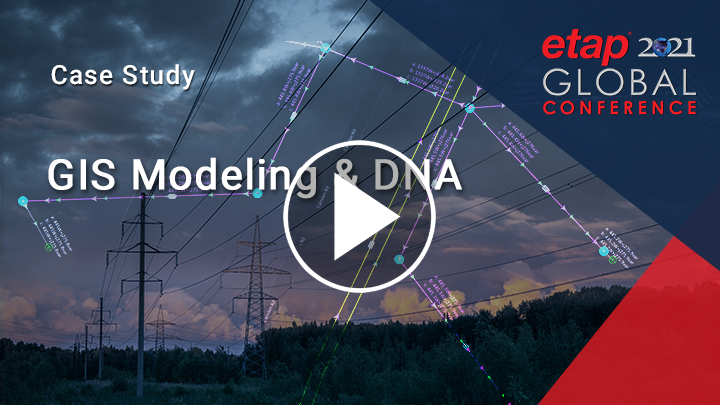
GIS Modeling & DNA
- 20:37
- Case Study
The traditional power system model and desktop-based analysis work well for greenfield projects. It becomes incredibly challenging to make use of the modeling in a brownfield project. The network routes are limited by existing infrastructure and road layouts. A new design for a built-up urban area is possible by multiple iterations of cable lengths, optimal routes, placement of electrical assets, etc. The iterative process becomes more manageable by having a georeferenced map of all interest areas with high accuracy. GIS-based software becomes extremely helpful to undertake a brownfield design. However, the challenge remains in extracting the GIS data into a power system software in executing the electrical analysis. ETAP is breaking ground in this avenue. EnergyTron is closely working to implement this on a large scale, potentially the largest in the world for this type of project analysis.
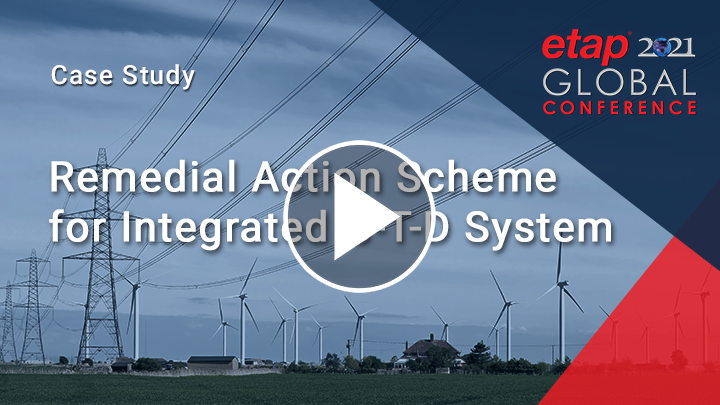
Remedial Action Scheme for Integrated G-T-D System
- 21:44
- Case Study
Due to system shutdowns stemming from drastic frequency decline associated with the loss of relatively large generating units, Fortis TCI embarked on exploring opportunities to curtail these events to improve system response. This was achieved through detailed modeling and validation of system parameters with event data gathered from previous events. Carefully implemented Remedial Action Schemes are currently explored to provide cost-saving benefits; significantly improving frequency response, without the need for larger spinning reserves and minimize investment costs for BESS.

Enterprise Asset Management & Automated Fault Analysis
- 25:48
- Case Study
Solution introduction & case study presentation. Remote Management of Protection Relays - Improved Productivity & Compliance Benefits. This presentation aims to define and demonstrate the importance of the remote management of protection relays in large power system networks. A protection system is vital for network security and reliability. A centralized system should aim to get each protection relay setting, records, logic, and status quickly and efficiently so that all these data can be analyzed, managed, and utilized. In OETC grid stations, there are more than 4000 protection relays installed. OETC network is rapidly expanding every year. There are incidences of tripping due to various reasons. These isolated equipment restorations can be done faster if protection relays fault records, events retrieved through remote access. ETAP and OETC are jointly working on conceptualizing and implementing a fully functional system for remote relay access and data retrieval – eProtect. This presentation discusses the technical requirements, networking solutions, cybersecurity requirements, features, testing, validating system requirements, and detailed benefits. Challenges faced during implementation will be discussed together with their resolution.

Enhanced End-to-End Real-Time SILHIL Workflows with ETAP and ePHASORSIM
- 14:24
- Case Study
The ETAP/ePHASORSIM hybrid power system solution is ideally suited for installing and certifying any new device on the grid for protection, monitoring and control, thus reducing risk and costly commissioning time—as well as validation of reliability and security of any transmission, distribution and generation grid before implementation. Users can simulate SIL and HIL scenarios in real time, greatly reducing time-to-market. We will demonstrate the time-savings and value of this solution by exporting an ETAP model to ePHASORsim and controlling it in closed-loop with ETAP’s controller hardware. To fine-tune the response, we will change the ETAP model, export again, the re-start the simulation—a cycle commonly observed in testing environments.

Microgrid Design & Analysis
- 12:42
- Case Study
Microgrid Analysis & Design is an essential step for Microgrid Implementation. Upfront design and analysis of the target microgrid system, whether for brownfield or green-field Microgrid implementation, can help drive both technical and financial benefits, including determining optimized generation assets required to meet the microgrid objectives as well as a projection of return on investments. Analysis & design from safety, reliability, and financial perspective are critical for successful microgrid implementation to minimize the impact and rework during the installation phase. This presentation will provide recommendations on best practices for Microgrid Analysis & Design.

etapAPP - Effectively Collect & Synchronize Field Data - ETAP Project Management Webinar Series Part 1
- 40:48
- Webinar
The etapAPP is a tablet application to streamline field data collection as well as model, verify, and visualize electrical systems using logical and geospatial asset location and connectivity.

Unit Capability Validation, an Analytical Approach for MOD-25 Compliance
- 23:34
- Case Study
It is crucial to define the reactive power limits to evaluate the voltage support available under normal, abnormal and emergency operations with the unit's safe functioning. Published generator thermal capabilities curves, produced by the manufacturer, define the limits for safe operation based on the generator design's thermal limitations. Practically, the available reactive capability differs from the published equipment curves due to plant specific design and operating constraints. This presentation discusses a theoretical approach utilizing a simplified electrical distribution system and an ETAP model to identify and validate the plant-specific unit capability.

Planning, Design, and Validation of a Microgrid using ETAP Digital Twin Platform
- 30:17
- Case Study
The implementation of a Microgrid involve several stages, in which the engineer has to deal with the interaction of different processes and dynamics, taking into account the different modes, topologies and scenarios that the system could possibly have. This is the case of an ongoing project for an important Grid operator in Colombia, in which PTI S.A and OTI are working together to deliver a comprehensive Monitoring and Control system for an entire Microgrid, comprised of different energy resources as Diesel, Solar, Batteries and a connection to the Public Grid. Project stages involve Planning, Design, Validation, In site Deployment and Testings, and for that purposes, Etap PS/RT and Opal RT solutions will be used, on a Digital Twin Platform environment.
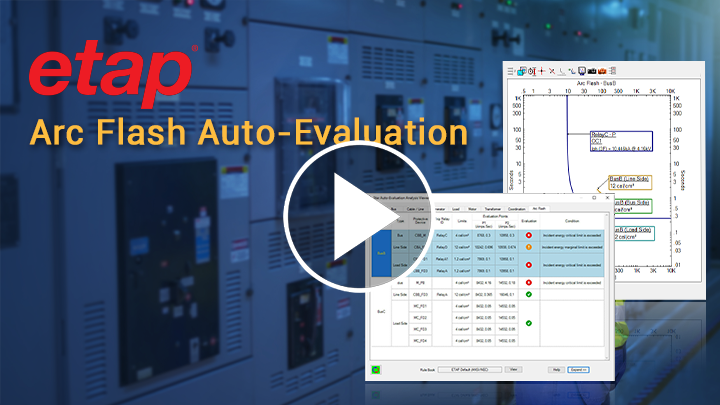
Arc Flash Auto-Evaluation
- 01:02:16
- Webinar
ETAP Arc Flash Auto-Evaluation allows you to quickly evaluate arc flash incident energy with automated protective device coordination study to significantly reduce costly modifications and mitigation equipment. The webinar demonstrates the automatic evaluation of C-area plots and equipment damage points.

HV Arc Flash Studies for one of the Largest Utilities in South America
- 20:22
- Case Study
This presentation focuses on HV arc flash hazard analysis, as part of a multi-voltage AF study (115, 34.5, 13.8, and 0.22 kV) for one of the three largest utilities in South America with hydro and renewables generation and T&D. It demonstrates the versatility of the ETAP ArcFault™ to assist in the calculations and estimates of electric arc currents and incident energy level for HV substation equipment. The presentation discusses how ArcFault study results were used to select engineering and administrative control strategies, personal protective equipment (PPE), changes in protection schemes and adjustments to reduce electrical risks in operation & maintenance of electrical T&D systems.

AC Arc Flash using IEEE 1584 - University Campus Case Study
- 24:25
- Case Study
Since the release of IEEE 1584-2018, the industry has been challenged to reach a consensus on applying the new standard. The most significant application “pain” so far has been identifying actual equipment data for input to the study, including bus gap and electrode configurations in the equipment. A case study of an arc flash analysis for a large university campus with MV and LV power distribution equipment of different types, vintages, and manufacturers is presented. The presentation highlights selection of electrode configuration(s) for various equipment types and voltage levels and correct application of arc current and enclosure size correction factors to significantly reduce the data entry time and effort. The presentation will cover upcoming IEEE P1584.1 revisions to apply IEEE 1584 for arc-flash hazard calculations directly from the revision subgroup chair.

Data Center Power System Expansion: DC Arc Flash Case Study
- 13:01
- Case Study
This power system study involved the replacement of an extensive UPS system at a data center. The studies included short-circuit, protective device coordination, and arc-flash hazard analysis for both the AC and DC systems consistent with the NFPA 70E 2018 and IEEE 1584 2018 Standards. The DC equipment as installed required mitigation efforts due to high incident energies. This presentation details the analysis, findings, and recommended mitigation for anyone embarking on similar retrofit or expansion studies

Hyperloop Propulsion System from Design to Operate
- 22:53
- Case Study
HyperloopTT focuses on systems that moves people and goods safely, efficiently and sustainably; bringing airplane speeds to the ground by using passive levitation and electric linear propulsion in a low-pressure tube. This presentation discusses the complex power system challenges and collaboration with ETAP for conceptual design and detailed engineering of the 1st commercial prototype. The companies will then thereafter collaborate with ETAP and migrate the digital twin into operations to validate and improve the prototype design and extend to upcoming long-distance commercial & freight systems.

Sustainable Transportation - SCADA & Maintenance Planning
- 12:47
- Case Study
This case study for Mumbai Metro Rail covers Operator Training Simulator (OTS), where the customer is specifically looking for a simulation environment to test their operations in a real-time environment for the following reasons: avoid errors, enhance communication & management of new crews, train inexperienced operators, certification and competency for operators, situational awareness & workload management. ETAP OTS helped Schneider Electric, India, to give the right solution for Metro Mumbai. ETAP OTS utilizes a model-driven power network that enables the customer to approve switching procedures, perform predictive simulations to verify correct switching actions with software-in-the-loop, replicate real-world situations with unlimited scenarios for knowledge transfer via a trainer-to-trainees learning environment.
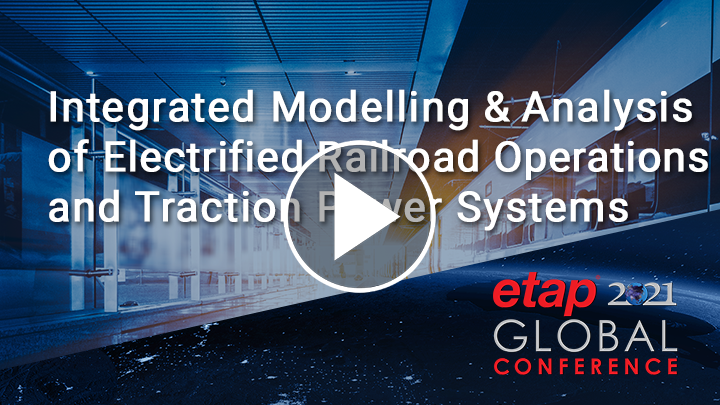
Integrated Modeling and Analysis of Electrified Railroad Operations and Traction Power Systems
- 22:28
- Case Study
The presentation covers: physical modeling of rail systems, techniques to speed modeling development, eTraX modular integration in ETAP, railroad & power system model validation, railroad & power system model calibration, integrating railroad operations & power system analysis. Practical lessons learned that address project challenges and solutions are discussed. The value of modeling and analysis, engineering deliverables, why they have value, and creating value streams are presented.

The Crucial Role of ADMS for Smart Cities
- 21:44
- Case Study
Smart City's objective is to develop resilient, safe, sustainable, and healthy living. The advent of DERs and ICT infrastructure in Smart City presents challenges and many significant opportunities for novel technologies together with distribution utility control room operation powered by ADMS. This presentation will describe how Smart Cities functions, ranging from city planning to operational resilience and sustainable urban growth, which can leverage and assist the utility control room ADMS application.

The Role Of ADMS For Improved Power Distribution Operation
- 28:59
- Case Study
Noida Power Company Limited implemented ETAP ADMS to improve its distribution network's operation, outage response, and increase revenue. This presentation introduces ETAP ADMS and demonstrates how NPCL has leveraged the solution to maximize revenue, enhance reliability, and improve customer satisfaction.
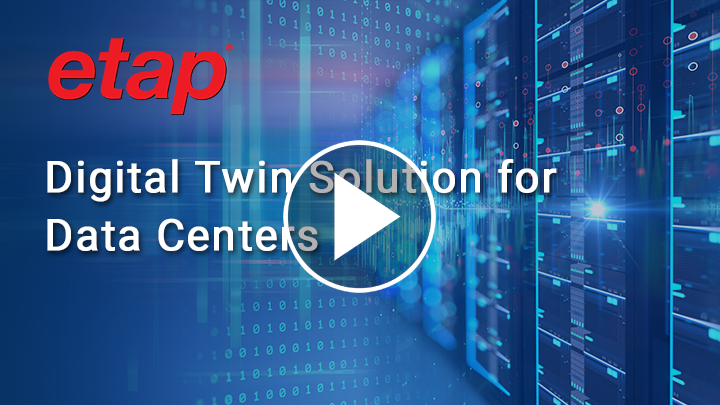
ETAP Digital Twin Solution for Data Centers
- 1:13:51
- Webinar
Smart Data Center Solutions for integrated power system modeling, analysis, and simulation have become critical in design and operation of Data Centers. Making proper design decisions early on during the system planning stages is paramount for energy efficiency strategies, reducing the total cost of ownership and improving the reliability of engineering and facility operations. In this webinar, we will present ETAP's Digital Twin solution for integrated design, analysis, real-time predictive simulation, and operation of Data Centers.
